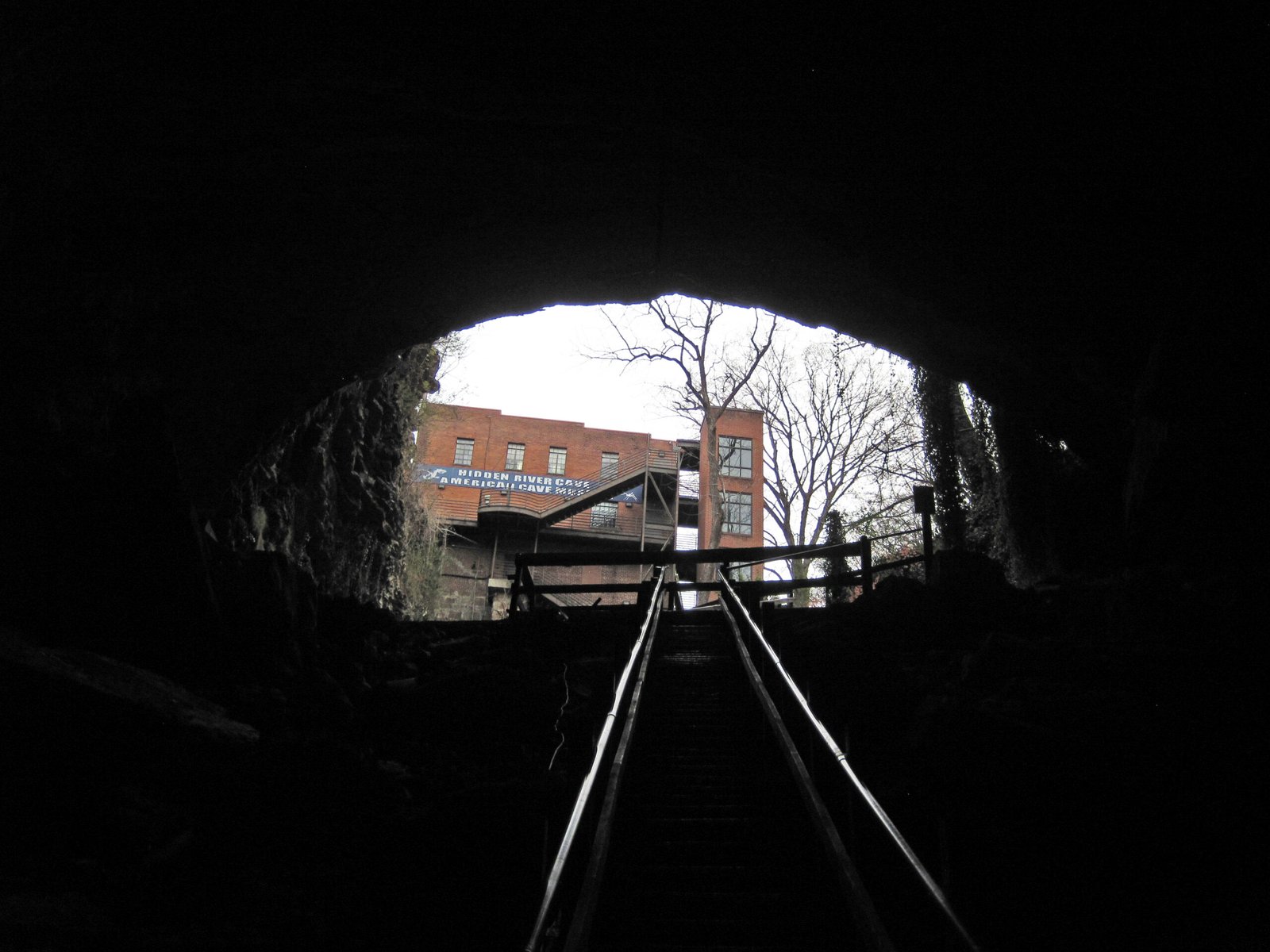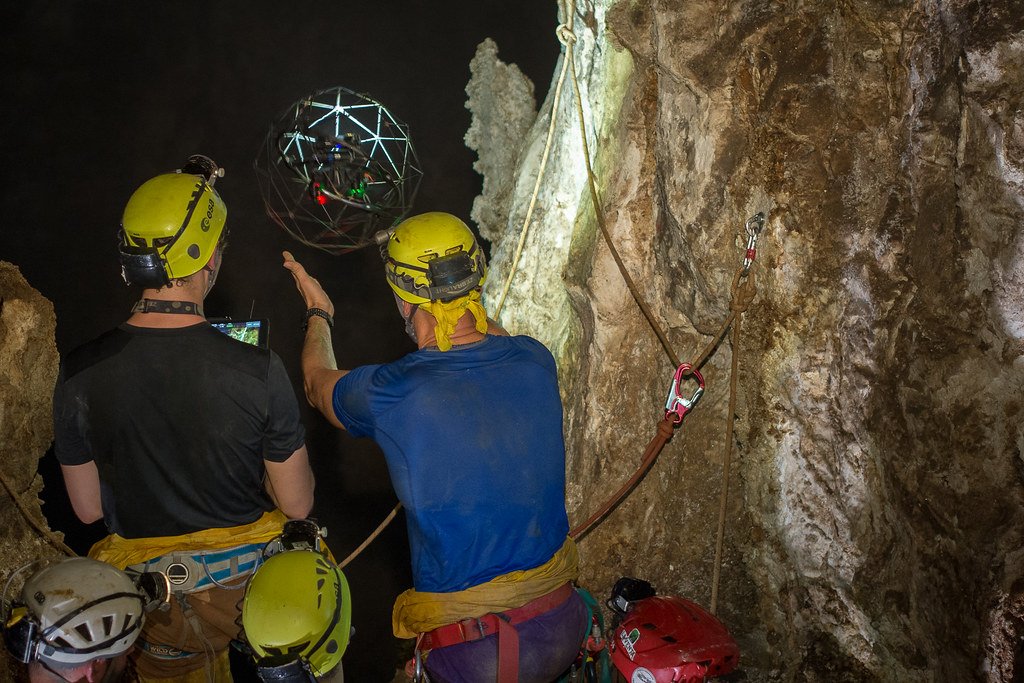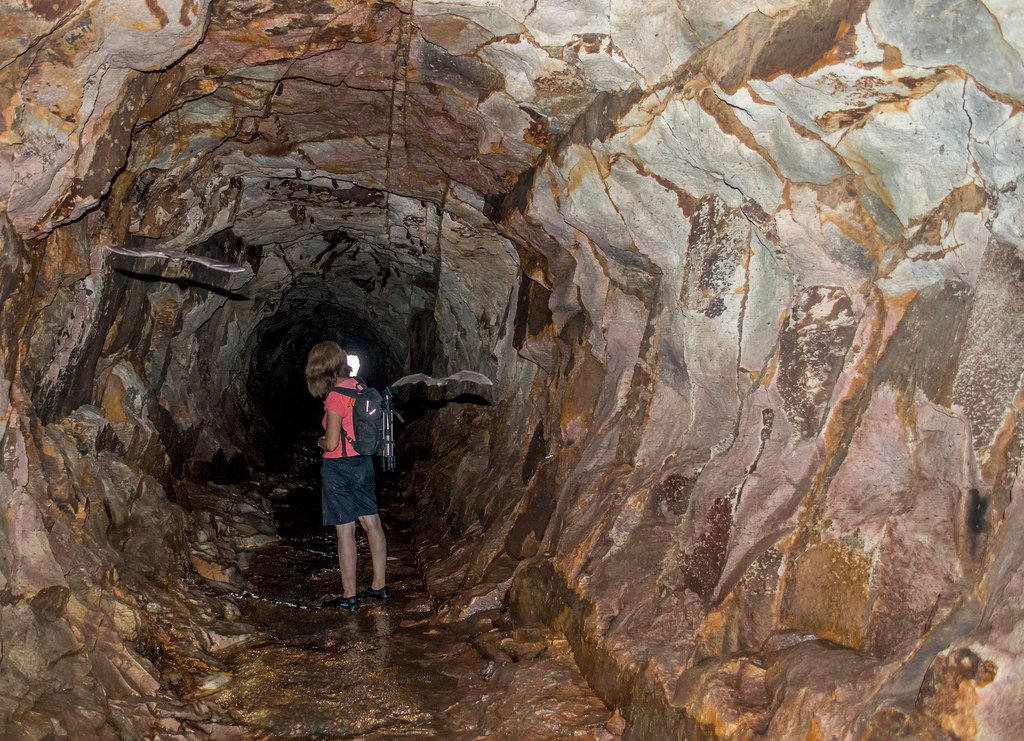Picture this: you’re standing at the entrance of a cave so deep that if you dropped a stone into its depths, you’d wait nearly half a minute before hearing it hit bottom. Welcome to Veryovkina Cave, a natural phenomenon that plunges deeper into the Earth than any other known cave system. Located in the remote mountains of Abkhazia, this underground giant stretches an mind-boggling 2,212 meters below the surface—that’s deeper than six Empire State Buildings stacked on top of each other. What makes this place even more fascinating is that we’re still discovering new passages and chambers, meaning its true depth might be even greater.
The Discovery That Changed Everything

The story of Veryovkina Cave begins in 1968 when Soviet speleologists first stumbled upon its entrance in the Arabika Massif. However, what they found was just the tip of an enormous underground iceberg. For decades, explorers could only penetrate a few hundred meters before hitting seemingly impassable obstacles. The real breakthrough came in 2017 when the Cave Research Foundation finally reached what we now know as the deepest point. This achievement required cutting-edge equipment, years of planning, and the kind of courage that makes your average extreme sport look like a Sunday picnic. The cave was named after Alexander Veryovkin, a Soviet geographer who dedicated his life to mapping this treacherous region.
A Journey Through Geological Time

Veryovkina Cave exists because of a perfect storm of geological conditions that took millions of years to create. The cave carved itself through limestone that formed when this area was covered by ancient seas, back when dinosaurs roamed the Earth. Water, with its patient persistence, slowly dissolved the rock grain by grain, creating the intricate network of passages we see today. Think of it like nature’s own sculpture project, except instead of chiseling away at marble, it used slightly acidic rainwater to carve through solid rock. The limestone here is so pure and thick that it provided the perfect canvas for this underground masterpiece. What’s remarkable is that this process is still happening today, meaning the cave is constantly evolving and potentially getting even deeper.
The Vertical Highway to Hell

Unlike horizontal cave systems that you might casually stroll through, Veryovkina Cave is essentially a vertical shaft with a series of drops that would make any roller coaster designer jealous. The deepest single drop plunges 152 meters straight down—imagine free-falling for about 6 seconds in complete darkness. The cave consists of multiple levels connected by these dramatic vertical sections, creating what explorers describe as an underground skyscraper in reverse. Some passages are so narrow that cavers have to remove their equipment and push it ahead of them, while others open into cathedral-sized chambers. The entire journey from surface to bottom typically takes experienced teams anywhere from 15 to 20 hours of continuous descent.
Temperature and Climate in the Abyss

Deep inside Veryovkina Cave, the laws of surface weather don’t apply, and the environment becomes surprisingly stable yet utterly hostile to human life. The temperature hovers around a constant 7°C (45°F) throughout the year, which might sound pleasant until you realize you’ll be soaking wet from underground streams and waterfalls. Humidity levels reach nearly 100%, creating an environment where condensation forms on every surface, including your skin and equipment. The air pressure increases noticeably as you descend, and some cavers report feeling the effects similar to mild altitude sickness in reverse. What’s particularly unsettling is the complete absence of any air movement in many sections—the silence is so profound that you can hear your own heartbeat echoing off the walls.
The Underground River System

One of the most spectacular and dangerous features of Veryovkina Cave is its active water system, which includes underground rivers, waterfalls, and pools that can change dramatically depending on surface weather conditions. The main underground river flows with surprising force, carrying sediment and debris from the surface world down into the deepest chambers. During heavy rains or snowmelt, these water levels can rise rapidly, turning what was once a manageable passage into a deadly torrent. Explorers have discovered multiple underground waterfalls, some cascading over 40 meters in a single drop, creating a thunderous roar that can be heard from hundreds of meters away. The water in these underground systems is remarkably pure, having been filtered through countless layers of limestone, but it’s also bone-chillingly cold. Some pools are so deep that divers haven’t found the bottom, adding another layer of mystery to this already enigmatic cave system.
Life in Perpetual Darkness

You might think that the deepest cave on Earth would be completely devoid of life, but Veryovkina Cave hosts a surprising variety of organisms that have adapted to this extreme environment. Scientists have discovered several species of bacteria that thrive in the cave’s unique conditions, feeding on minerals and organic matter that trickles down from the surface. Tiny invertebrates, including specialized cave-dwelling insects and crustaceans, call this underground world home. These creatures have evolved fascinating adaptations—many are completely blind, having lost the need for eyes over thousands of generations. Instead, they’ve developed enhanced senses of touch and chemical detection that make them perfectly suited for navigating in absolute darkness. Some of these species exist nowhere else on Earth, making Veryovkina Cave a unique biological laboratory.
The Extreme Challenge of Exploration

Exploring Veryovkina Cave isn’t just dangerous—it’s one of the most technically demanding expeditions on the planet, requiring skills that combine rock climbing, underwater diving, and survival expertise. Teams must carry everything they need for multi-day expeditions, including specialized ropes rated for extreme conditions, underwater gear for flooded passages, and enough food and water to sustain them during the grueling journey. The physical demands are enormous; cavers often lose significant weight during expeditions due to the constant exertion and stress. Equipment failure at depth can be fatal, so every piece of gear is checked and double-checked before descent. Communication with the surface becomes impossible after the first few hundred meters, meaning rescue operations would be nearly impossible. Many expedition members describe the psychological challenge as being just as difficult as the physical one—spending days in complete darkness, surrounded by the constant sound of dripping water and your own breathing, can push even experienced cavers to their mental limits.
Mapping the Unmappable

Creating accurate maps of Veryovkina Cave presents challenges that would make even the most experienced surveyors break out in a cold sweat. Traditional surveying equipment becomes useless in the cave’s extreme conditions, where compass readings can be affected by magnetic interference and measuring tapes become tangled in the complex three-dimensional maze of passages. Modern expeditions rely on laser distance meters and digital mapping tools, but these must be specially modified to withstand the cave’s humid, cold environment. The sheer verticality of the cave means that mapmakers are working in three dimensions constantly, trying to accurately represent drops, climbs, and complex chamber systems on two-dimensional paper. GPS signals can’t penetrate the rock, so explorers must rely on dead reckoning and careful measurement to track their progress. Even today, significant portions of the cave system remain unmapped, and new passages are discovered regularly.
The Technology Behind Deep Cave Exploration

The equipment needed to explore Veryovkina Cave reads like a shopping list for a science fiction movie, combining cutting-edge materials science with time-tested cave exploration techniques. Ropes must be specially designed to handle both the extreme vertical drops and the abrasive limestone walls that can cut through standard climbing rope like a knife through butter. Cavers use advanced LED lighting systems with multiple backup power sources, because losing light in Veryovkina Cave isn’t just inconvenient—it’s potentially fatal. Breathing apparatus becomes necessary in some sections where air quality is poor or where underground lakes must be crossed by swimming underwater. Communication systems include everything from simple whistle codes to sophisticated radio equipment that can penetrate short distances through rock. Perhaps most importantly, cavers carry emergency bivouac gear that allows them to survive underground for extended periods if something goes wrong.
Weather’s Deadly Influence

What happens on the surface of the Arabika Massif can literally become a matter of life and death for anyone exploring Veryovkina Cave hundreds of meters below. Heavy rainfall or rapid snowmelt can transform the cave’s water system from a manageable challenge into a raging underground flood in a matter of hours. Explorers have reported water levels rising several meters during storms, completely submerging passages that were easily walkable just hours before. The cave acts like a giant funnel, collecting water from a wide area on the surface and channeling it into the underground passages with frightening efficiency. Temperature changes on the surface can also affect air pressure within the cave, sometimes creating dangerous air currents or stagnant zones with poor air quality. This connection between surface and underground conditions means that cave exploration teams must constantly monitor weather forecasts and be prepared to evacuate quickly if conditions deteriorate.
Scientific Discoveries in the Depths

Veryovkina Cave has become an invaluable natural laboratory for scientists studying everything from geology to biology to climate science. Researchers have discovered that the cave’s limestone formations contain a detailed record of climate changes going back thousands of years, locked away in the mineral deposits that formed layer by layer over millennia. The cave’s unique bacterial communities are providing insights into how life might exist in extreme environments, including potentially on other planets. Hydrologists are using the cave to study underground water flow patterns and how surface water systems connect to deep groundwater reserves. The cave’s formations also provide clues about seismic activity in the region, as earthquakes can leave distinctive marks in the delicate mineral structures. Some researchers believe that studying caves like Veryovkina could help us understand how similar systems might exist on Mars or other rocky planets.
The Human Cost of Pushing Boundaries

Exploring the world’s deepest cave has claimed its share of human casualties, serving as a sobering reminder of the risks involved in pushing the boundaries of human exploration. Several cavers have died in Veryovkina Cave, victims of everything from equipment failure to sudden flooding to simple human error amplified by the unforgiving environment. Rescue operations in such a deep cave system are extraordinarily complex and dangerous, often putting rescue teams at nearly as much risk as the people they’re trying to save. The physical toll on explorers is immense—many suffer from hypothermia, dehydration, and injuries from falls or equipment malfunctions. Even successful expeditions leave participants with lasting effects: joint problems from the constant strain of vertical movement, respiratory issues from breathing humid air for extended periods, and psychological impacts from spending days in complete isolation from the surface world. Despite these risks, the cave continues to attract explorers driven by the irresistible human urge to discover what lies beyond the next passage.
Comparing Depths: Veryovkina vs Other Deep Caves

To truly appreciate Veryovkina Cave’s record-breaking depth, it helps to compare it with other famous deep cave systems around the world. The previous record-holder, Krubera Cave (also in Abkhazia), reaches 2,197 meters deep—just 15 meters shallower than Veryovkina. France’s Gouffre Mirolda extends 1,733 meters below the surface, while Austria’s Lamprechtsofen reaches 1,632 meters deep. What sets Veryovkina apart isn’t just its depth, but the technical difficulty of reaching its lowest points—many other deep caves have more horizontal development, making them somewhat more accessible. The concentration of the world’s deepest caves in the Caucasus region isn’t coincidental; this area’s unique geology, with its thick limestone formations and specific tectonic history, creates perfect conditions for extreme cave development. Interestingly, several other caves in the same region are still being explored and could potentially challenge Veryovkina’s record in the coming years.
The Future of Deep Cave Exploration

The story of Veryovkina Cave is far from over, as technological advances and new exploration techniques continue to push the boundaries of what’s possible in extreme cave environments. Robotic exploration devices are being developed that could scout ahead of human explorers, mapping dangerous passages and testing air quality without putting lives at risk. Improved materials science is producing lighter, stronger equipment that can better withstand the cave’s harsh conditions. Advanced diving technology might allow explorers to push through underwater sections that currently block further progress. Some researchers speculate that Veryovkina Cave might connect to other cave systems in the region, potentially creating an even more extensive underground network. Climate change is also affecting cave exploration, as changing precipitation patterns alter the cave’s water systems in unpredictable ways. The ultimate question remains: have we truly found the bottom of Veryovkina Cave, or do even deeper passages await discovery?
Protecting This Underground Wonder

Veryovkina Cave faces unique conservation challenges that stem from both its extreme inaccessibility and its growing reputation as the world’s deepest cave. The cave’s location in the politically complex region of Abkhazia complicates conservation efforts, as international cooperation can be difficult to coordinate. Human impact, while limited by the cave’s difficulty, still poses threats—everything from equipment left behind by expeditions to potential contamination from surface activities. The cave’s delicate formations can be damaged by the mere presence of explorers, as changes in air flow and humidity can affect the slow process of mineral deposition that creates its stunning formations. Scientists and conservation groups are working to establish protocols that balance the need for continued exploration and research with the imperative to preserve this unique natural wonder. Some propose limiting the number of expeditions per year, while others advocate for the development of less invasive exploration techniques.
The Psychological Journey into Darkness

Perhaps one of the most underexplored aspects of Veryovkina Cave is its profound psychological impact on those who venture into its depths. The experience of descending into the world’s deepest cave pushes human psychology to its limits in ways that few other environments can match. Complete darkness for days at a time, broken only by the narrow beam of artificial lights, creates a sensory deprivation experience that can be both terrifying and oddly meditative. The constant awareness that you’re separated from the surface world by over two kilometers of solid rock creates a unique form of isolation anxiety that even experienced cavers struggle to describe. Many explorers report vivid dreams during their brief rest periods underground, often featuring themes of flying or falling that seem to reflect their subconscious processing of the extreme vertical environment. The sound environment is equally disorienting—periods of complete silence interrupted by the echo of dripping water or the roar of underground waterfalls can play tricks on the mind. Some cavers describe experiencing a profound shift in their perception of space and time, emerging from the cave with a fundamentally changed understanding of humanity’s place in the natural world.
Standing at the known bottom of Veryovkina Cave, nearly 2,212 meters below the surface, explorers find themselves at one of the most remote and inaccessible places on Earth. This underground frontier represents more than just a record-breaking depth—it’s a testament to human curiosity and our relentless drive to explore the unknown. The cave continues to reveal new secrets with each expedition, from undiscovered species adapted to its extreme environment to geological formations that tell the story of our planet’s ancient past. While technology advances and exploration techniques improve, Veryovkina Cave reminds us that there are still places on Earth where nature reigns supreme and human presence is merely tolerated. What other mysteries lie waiting in the darkness below, and how much deeper might this natural abyss actually extend?



